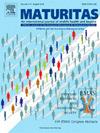Risk of a second primary cancer after breast cancer in Southern Spain: a population-based study over 3 decades
IF 3.6
2区 医学
Q2 GERIATRICS & GERONTOLOGY
引用次数: 0
Abstract
Objective
To estimate the risk of developing a second primary cancer (SPC) among women diagnosed with breast cancer in Granada, Spain.
Study design
This population-based observational cohort study utilized data from the Granada Cancer Registry. We included all women aged 15 and above diagnosed with malignant breast cancer from 1985 to 2019.
Main outcome measures
The analysis used the standardized incidence ratio to compare breast cancer patients' risk of developing a SPC with the risk in the general population.
Results
Out of 12,260 women diagnosed with breast cancer, 1032 (8.4 %) developed a SPC. The median time to SPC diagnosis was 7.2 years. The most common types of SPC were non-melanoma skin, colorectal, endometrial and haematological malignancies. The overall excess risk of a SPC was 33 % (95 % CI = 25 %–41 %), with the highest increased risks observed for non-melanoma skin, digestive, and genitourinary malignancies. The risk of a SPC was 2.2 times greater than expected in women under 50, and 1.2 times in women over 50. For those under 50, the risk was nearly 6 times higher for digestive sites, and 3 to 5 times higher for lung, non-melanoma skin, genitourinary, and haematological cancers. In women over 50, excess risks were also observed in those sites, but to a lesser extent.
Conclusions
Women with breast cancer have a significantly increased risk of developing a SPC, especially non-melanoma skin, digestive, and genitourinary cancers. Personalized prevention and follow-up strategies are needed to reduce the risk in women diagnosed with breast cancer, particularly younger women.

西班牙南部乳腺癌后第二原发性癌症的风险:一项超过30年的基于人群的研究
目的评估西班牙格拉纳达市诊断为乳腺癌的妇女发生第二原发癌(SPC)的风险。研究设计:这项基于人群的观察队列研究使用了格拉纳达癌症登记处的数据。我们纳入了1985年至2019年期间所有15岁及以上诊断为恶性乳腺癌的女性。主要结果测量:分析使用标准化发生率比较乳腺癌患者发生SPC的风险与一般人群的风险。结果在12260名被诊断为乳腺癌的女性中,1032名(8.4%)发生了SPC。到SPC诊断的中位时间为7.2年。最常见的SPC类型是非黑色素瘤皮肤、结直肠、子宫内膜和血液系统恶性肿瘤。SPC的总体超额风险为33% (95% CI = 25% - 41%),非黑色素瘤皮肤、消化系统和泌尿生殖系统恶性肿瘤的风险增加最高。50岁以下女性患SPC的风险是预期的2.2倍,50岁以上女性是1.2倍。对于50岁以下的人来说,消化部位的风险高出近6倍,肺癌、非黑色素瘤皮肤、泌尿生殖系统和血液学癌症的风险高出3至5倍。在50岁以上的女性中,在这些部位也观察到过度的风险,但程度较轻。结论:患有乳腺癌的女性发生SPC的风险显著增加,尤其是非黑色素瘤皮肤癌、消化道癌和泌尿生殖系统癌。需要个性化的预防和后续策略,以降低诊断为乳腺癌的妇女,特别是年轻妇女的风险。
本文章由计算机程序翻译,如有差异,请以英文原文为准。
求助全文
约1分钟内获得全文
求助全文
来源期刊

Maturitas
医学-妇产科学
CiteScore
9.10
自引率
2.00%
发文量
142
审稿时长
40 days
期刊介绍:
Maturitas is an international multidisciplinary peer reviewed scientific journal of midlife health and beyond publishing original research, reviews, consensus statements and guidelines, and mini-reviews. The journal provides a forum for all aspects of postreproductive health in both genders ranging from basic science to health and social care.
Topic areas include:• Aging• Alternative and Complementary medicines• Arthritis and Bone Health• Cancer• Cardiovascular Health• Cognitive and Physical Functioning• Epidemiology, health and social care• Gynecology/ Reproductive Endocrinology• Nutrition/ Obesity Diabetes/ Metabolic Syndrome• Menopause, Ovarian Aging• Mental Health• Pharmacology• Sexuality• Quality of Life
 求助内容:
求助内容: 应助结果提醒方式:
应助结果提醒方式:


